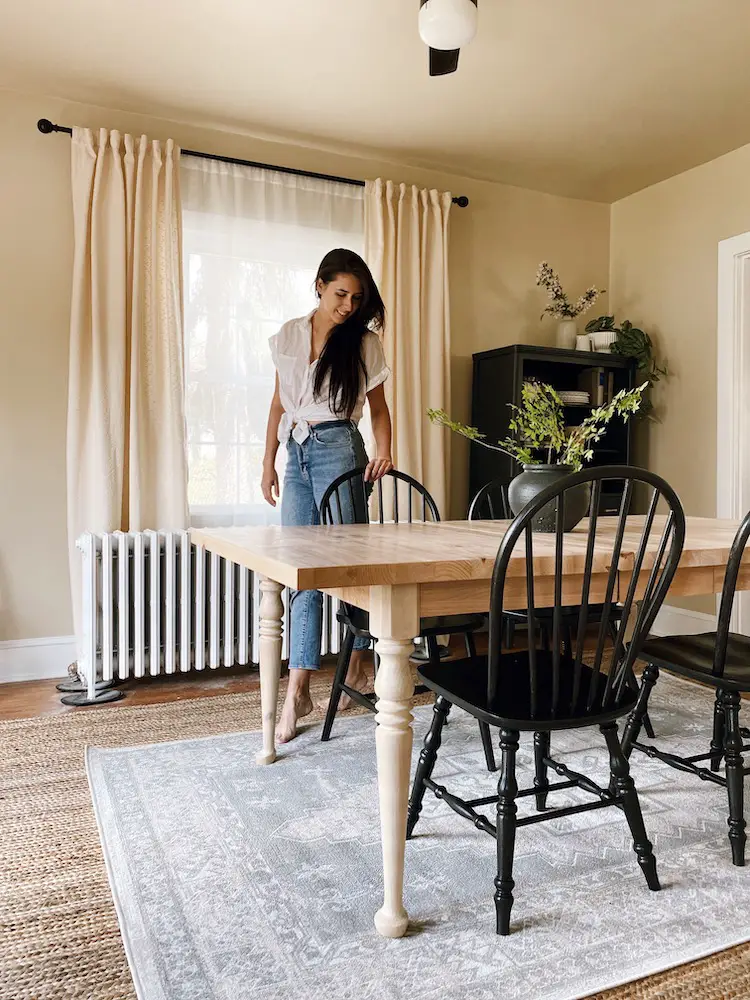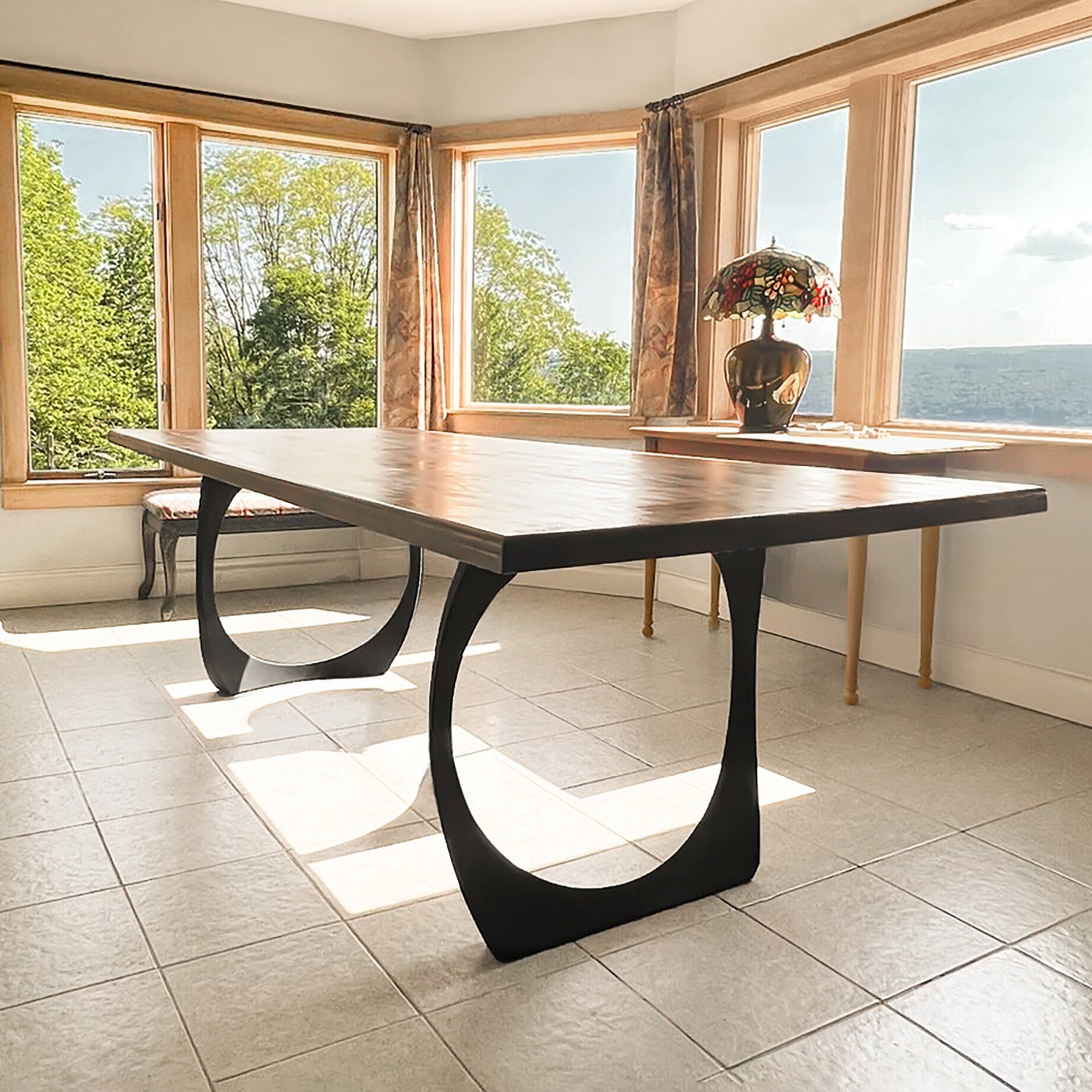Exploring Different Styles for Dining Room Table Legs to Suit Your Visual
Exploring Different Styles for Dining Room Table Legs to Suit Your Visual
Blog Article
Selecting the Perfect Table: What Styles Job Best for Your Home?
Selecting the optimal eating table for your home can be a nuanced process that balances looks and capability. To navigate these options successfully and locate a table that truly matches your home, think about the adhering to aspects in detail.
Evaluating Your Area
Reviewing the measurements and layout of your dining area is an essential initial step in choosing the best table. Begin by gauging the size and width of the room, accounting for entrances, home windows, and other architectural features that can influence table positioning. This makes sure that your table not only fits however likewise enables for comfy motion around it.
Think about the variety of people you normally amuse. A table needs to suit your family's day-to-day requirements while using adequate versatility for occasional guests. Generally of thumb, allot at least 24 inches of table width each to ensure a comfy eating experience.
It's likewise vital to preserve appropriate clearance around the table. Preferably, there need to go to least 36 inches between the table side and wall surfaces or other furniture, making it possible for simple gain access to and movement. For rooms where chairs with arms or added storage units like buffets are entailed, boosting this clearance to 48 inches is recommended.
Illumination and atmosphere play substantial functions. Ensure that your eating table lines up with existing lights components or prepare for ample illumination solutions. This detailed spatial assessment warranties that your table not just fits physically yet likewise integrates with your space's overall performance and aesthetic.
Popular Table Styles

Typical eating tables usually include elaborate details, curved legs, and rich timber coatings, stimulating a sense of timeless elegance. They are excellent for homes with timeless decoration or those seeking to add a touch of sophistication to their dining location.
Modern eating tables focus on simpleness and tidy lines, typically integrating materials like glass and steel. These tables are suitable for contemporary spaces, providing a streamlined and clean look that enhances minimal design ideologies.
Rustic table, on the other hand, stress all-natural materials and a handmade appearance - dining room table legs. They often include recovered timber and a troubled finish, developing a warm and welcoming environment. These tables function well in farmhouse-style homes or those looking for a cozy, natural feel
Industrial eating tables combine raw products such as metal and timber, typically showcasing a practical aesthetic. This design is appropriate for loft spaces or urban spaces, including a touch of rugged beauty and sturdiness to the eating experience.
Each style supplies distinct benefits, making it necessary to pick one that aligns with your home's general design and your personal choices.
Material Options
When picking a table, the option of product plays an important duty in identifying both the table's appearances and performance. Timber, steel, glass, and composite materials each offer one-of-a-kind benefits and challenges, making it essential to line up the product with your home's decor and way of life requirements.
Timber is a timeless and versatile choice, readily available in selections such as oak, walnut, and mahogany. Known for its sturdiness and heat, timber complements both conventional and contemporary interiors. Nevertheless, it calls for normal upkeep to prevent scratches and warping.
Steel tables, often crafted from stainless steel, aluminum, or wrought iron, are praised for their contemporary charm and toughness. They are especially fit for commercial or minimalist settings however can be susceptible to dents and may feel cold to the touch.
Glass dining tables bring an air of elegance and openness, ideal for smaller sized rooms as they develop an impression of even more space. While simple to clean, glass can be vulnerable to smudges and requires careful handling to stay clear of chips and splits.
Composite products, such as MDF and plywood, offer cost-efficient and customizable options, though they may lack the durability of natural products. Picking the ideal product ensures your table is both a useful property and a visual delight.
Sizes And Shape Factors To Consider
After figuring out the suitable material for your eating table, the next consideration is picking the ideal shape and dimension to match your area. The form of the table dramatically influences the room's visual and performance. Rectangular tables, one of the most typical form, are the original source excellent for larger spaces and can suit a higher variety of guests. They also enable a much more formal eating experience. Conversely, rounded tables promote a sense of affection and are outstanding for smaller sized dining locations, motivating discussion by getting rid of edges and making everybody really feel similarly consisted of.
Dimension is equally vital and should be dictated by both the area's dimensions and the number of individuals you intend to seat routinely. As a regulation of thumb, allocate at least 24 inches of table size per individual to ensure comfortable eating. In addition, consider the table's clearance space: there must go to the very least 36 inches in between the table edge and the walls or other furniture. This makes sure click site that restaurants can move easily without feeling cramped. Prolonging tables use adaptability if you frequently host larger gatherings, offering extra seating when required without inhabiting additional area daily. Picking the appropriate form and dimension makes certain both practicality and visual consistency in your eating location.
Matching Your Decor
Selecting a table that balances with your existing decor is crucial in producing a cohesive and welcoming area. Begin by assessing your existing interior decoration style, whether it be modern, conventional, rustic, or diverse. The dining table should enhance the overall visual, not contend with it. A sleek, minimalist table with tidy lines is optimal for a modern home, while a vintage, elaborate table matches a much more typical setting.
If your decor features warm tones and natural materials, think about a wood table to boost the natural feeling. Alternatively, a glass or steel table may be more suitable in an area dominated by amazing shades and commercial aspects.
A rough-hewn, redeemed timber table can add character to a rustic area, while a refined marble surface can elevate an elegant eating location. A well-matched dining table not only boosts visual appeal yet likewise enriches the total eating experience.

Final Thought
Picking the optimal eating table demands careful consideration of area, style, products, form, and dimension (dining room table legs). Traditional tables complement classic interiors with rich timber surfaces, while modern-day tables match modern settings Go Here through glass and metal. Rustic layouts present heat via natural materials, and industrial styles enhance urban environments with raw elements. Balancing the dining table with existing decoration makes sure both capability and aesthetic allure, adding to a natural and visually pleasing dining area.
Report this page